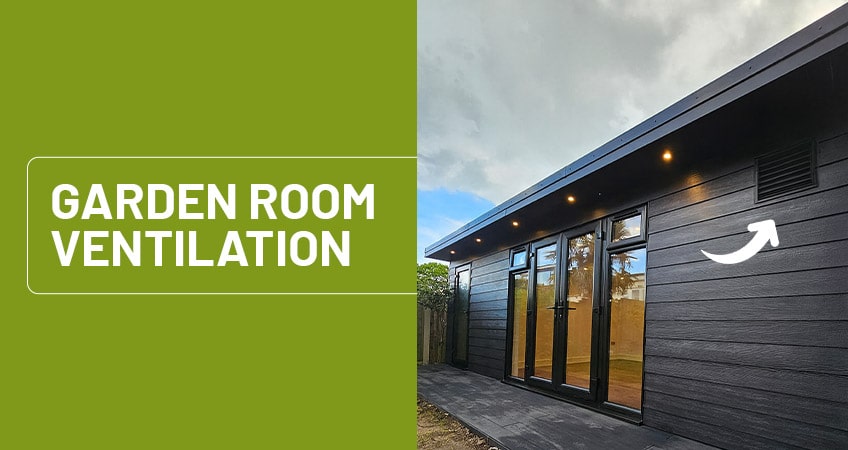Nobody wants to step into their dream garden room only to find it feeling like a tropical rainforest – and not in a good way. Without adequate airflow your perfect retreat turns into a stuffy, damp nightmare faster than you can say “condensation.” But don’t worry – at Garden Rooms 365, we’ve mastered the art of making buildings breathe properly, and we’re here to share our secrets.
Good garden room ventilation isn’t just about comfort (though being able to breathe easily is rather important). It’s about protecting your investment, maintaining your health, and ensuring your space stays fresh and usable all year round. After 25 years of building bespoke garden rooms across Essex, we’ve learned that the difference between a mediocre garden room and an exceptional one often comes down to one crucial factor: airflow.
Let’s dive into why garden room airflow matters so much and explore how our expert team creates spaces that literally breathe with you.
The sneaky problems of poor garden room ventilation
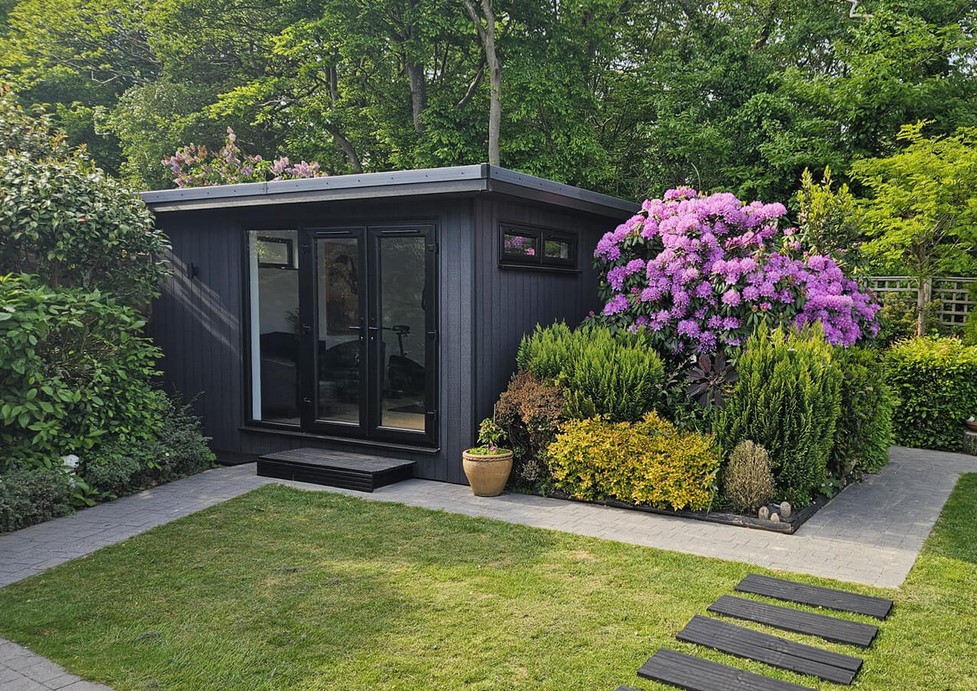
When garden room airflow goes wrong, it doesn’t just announce itself with a polite knock on the door. Instead, these issues creep up on you like uninvited guests at a dinner party.
Moisture becomes your worst enemy
Without proper garden room ventilation, moisture has nowhere to go. Every cup of tea you brew, every breath you take, every time you pop in from the rain – it all adds up. This trapped moist air creates the perfect breeding ground for mould and mildew, which can damage your beautiful new space and potentially harm your health.
Comfort goes out the window
Ever tried working in a stuffy, airless room? Your productivity plummets, your mood sours, and suddenly that expensive garden office feels more like a punishment than a privilege. Poor airflow and stale air makes spaces feel oppressive and uncomfortable, defeating the entire purpose of having a garden room retreat.
Your investment deteriorates
Here’s the costly bit: inadequate garden room moisture control can lead to structural damage over time. Wood warps, metal corrodes, and finishes deteriorate. What should have been a long-lasting addition to your property becomes a maintenance headache.
Our approach to garden room airflow: letting buildings breathe naturally
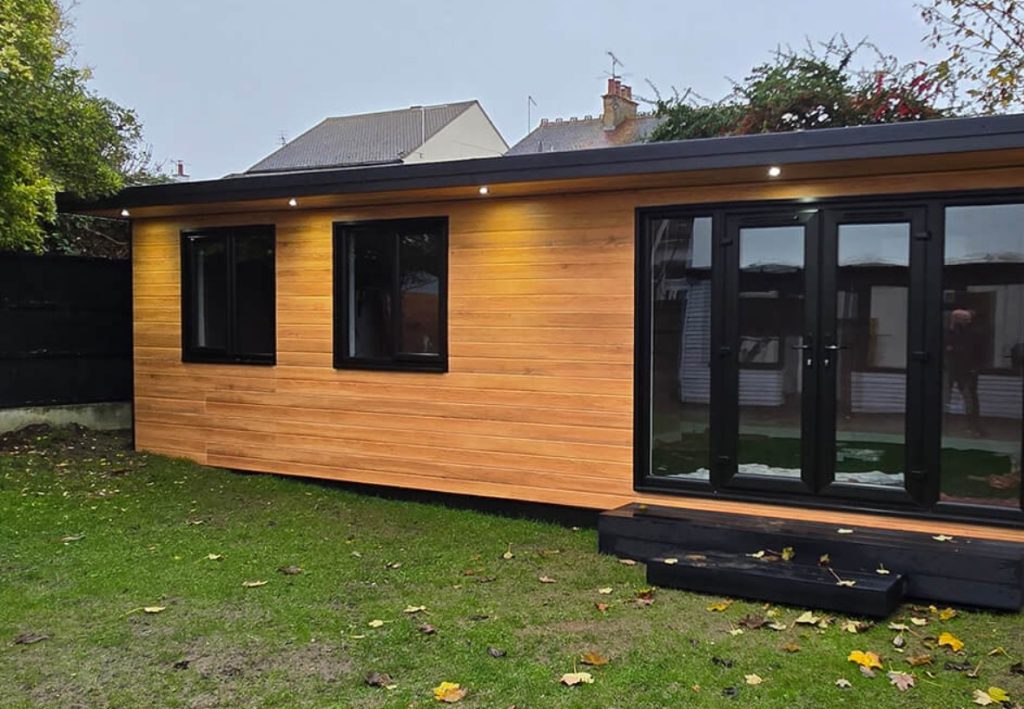
At Garden Rooms 365, we don’t just slap a couple of vents in the walls and call it a day. Our approach to garden room ventilation is rooted in building science and refined through decades of experience.
Passive ventilation: the elegant solution
We’re big fans of passive ventilation systems because they work with natural physics rather than against them. Hot air rises, cold air sinks – it’s not rocket science, but using these principles effectively requires expertise. Our passive ventilation approach creates gentle, continuous air movement without the need for noisy fans or energy-hungry mechanical systems.
Strategic placement matters
Every Garden Rooms 365 build includes carefully positioned ventilation points. We consider prevailing winds, the orientation of your space, and how you’ll actually use the room. A garden office needs different airflow patterns than a garden bar or music studio, and our designs reflect these nuances.
How passive ventilation works its magic
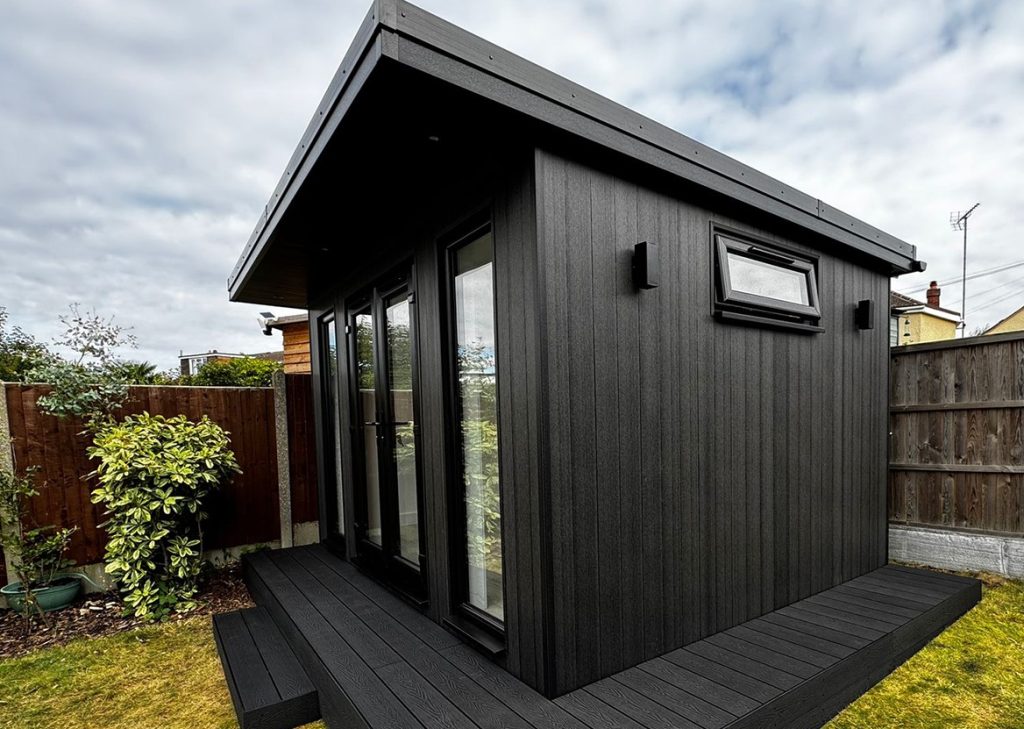
Passive ventilation might sound like a fancy term, but the concept is beautifully simple. Think of it as giving your garden room a set of lungs that work automatically.
The stack effect in action
Humid air naturally rises and escapes through higher ventilation points, creating a gentle suction that draws fresh air in through lower vents. This creates a continuous, natural circulation that keeps your space fresh without any mechanical intervention.
Cross-ventilation for enhanced flow
We position vents to encourage air to flow across the room, not just up and down. This cross-ventilation ensures that no corner becomes a stagnant pocket where moisture and warm air can build up.
Seasonal adaptability
Our passive ventilation systems work year-round. In summer, they help keep your space cool by allowing hot air to escape. In winter, they prevent condensation while maintaining comfortable temperatures – because nobody wants their garden gym turning into a sauna in July or an icebox in January.
Materials that breathe: the foundation of good garden room airflow
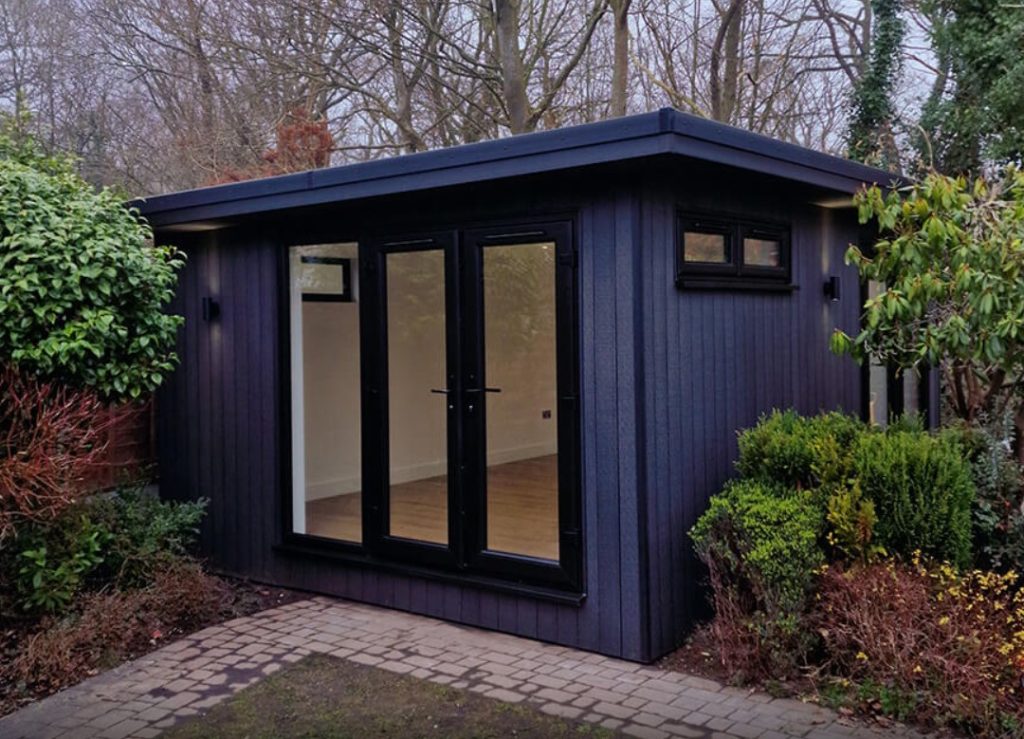
Not all building materials are created equal when it comes to garden room moisture control. Some trap moisture like a sponge, while others allow it to pass through naturally.
Breathable insulation choices
We select insulation materials that regulate moisture while maintaining excellent thermal performance. These materials allow water vapour to pass through gradually, preventing the build-up that leads to condensation problems.
Timber that works with nature
Our carefully selected timber species not only look fantastic but also contribute to natural moisture regulation. Wood has been managing moisture for millions of years – we just help it do its job more effectively in a modern building context.
Vapour-permeable finishes
Even our paint and finishing choices consider breathability. We use products that allow buildings to regulate moisture naturally while still providing excellent protection and aesthetics.
The bonus benefits of proper garden room ventilation
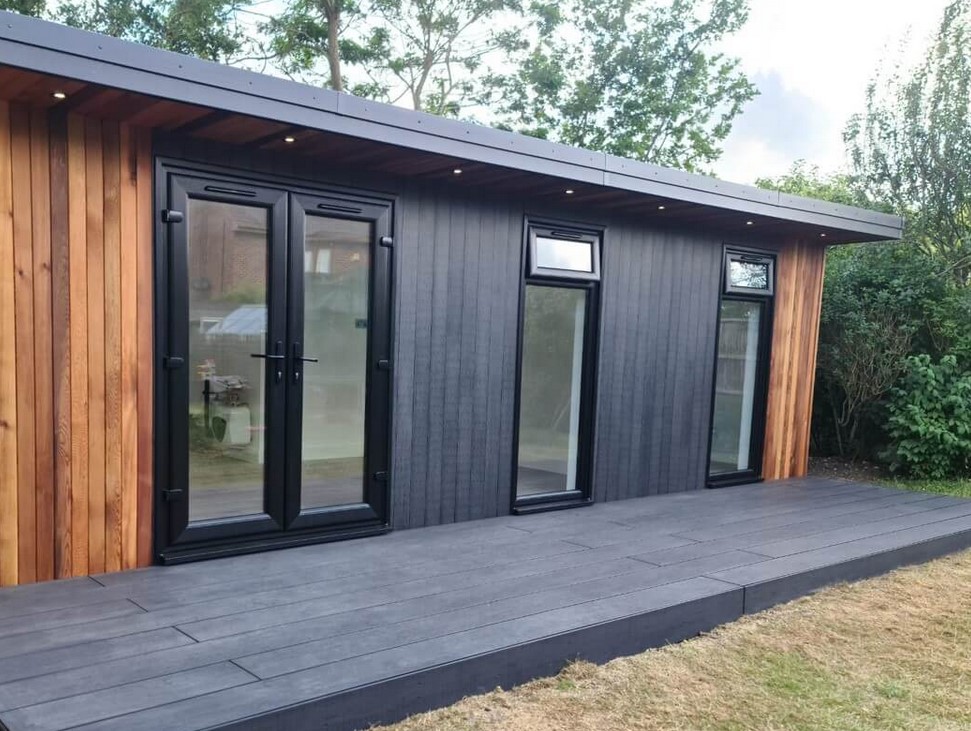
Good airflow does more than just prevent problems – it actively enhances your garden room experience.
Energy efficiency that saves money
Proper garden room airflow reduces the need for artificial heating and cooling. Natural ventilation can keep your space comfortable using far less energy than sealed buildings that rely entirely on mechanical systems. Your electricity bills will thank you.
Enhanced natural light distribution
Moving air helps distribute natural light more effectively throughout your space. It sounds odd, but good airflow prevents the optical distortions that can occur in stagnant air, making your garden room feel brighter and more spacious.
Better acoustics for garden studios and offices
Stagnant air can actually affect sound quality. Proper ventilation creates subtle air movements that can improve acoustics – particularly important if you’re planning a garden music studio or need crisp audio for video calls in your garden office.
Frequently asked questions about garden room airflow
Will proper ventilation make my garden office cold in winter?
Not when it’s done correctly. Our passive ventilation systems provide just enough air movement to prevent moisture problems while maintaining comfortable temperatures. We’re not creating draughts – we’re creating gentle, controlled airflow that works with your heating system, not against it.
Do I need to worry about security with mechanical ventilation openings?
Security is always a consideration in our designs. Our ventilation solutions incorporate security features that allow airflow while preventing unwanted access. We’ve been designing secure garden rooms for over 25 years – we’ve got this covered.
How do I know if my existing garden room has airflow problems?
Warning signs include condensation on windows, musty odours, visible mould growth, or the space feeling stuffy despite being clean and tidy. If you’re experiencing any of these issues, it’s worth having a professional assessment of your garden room ventilation.
Can airflow solutions be added to existing garden rooms?
In many cases, yes. While it’s always easier to incorporate proper garden room airflow from the design stage, retrofit solutions are often possible. Each situation is different, so we’d need to assess your specific building and circumstances.
Will good ventilation affect my garden room’s insulation performance?
Properly designed ventilation actually supports insulation performance by preventing moisture-related problems that can reduce insulation effectiveness. Our designs ensure that thermal performance and ventilation work together harmoniously.
Ready to breathe easy in your new garden room?
Creating a garden room with perfect airflow isn’t just about following building regulations – it’s about understanding how buildings, people, and the environment interact. At Garden Rooms 365, we’ve spent over 25 years perfecting these interactions to create spaces that are comfortable, healthy, and built to last.
Your dream garden room should be a place where you can work, relax, exercise, or create without worrying about stuffy air or moisture problems. It should feel fresh and inviting every time you step inside, regardless of the weather outside or the season.
Ready to discover how a properly ventilated garden room can transform your outdoor space? Our expert team is standing by to discuss your project and provide a free, no-obligation quote. We’ll assess your specific site conditions, understand how you plan to use your space, and design a bespoke solution that breathes as beautifully as it looks.
Contact Garden Rooms 365 today and let’s create a garden room that truly breathes life into your property. After all, when it comes to garden room airflow, there really is no standard like the 365 standard.


